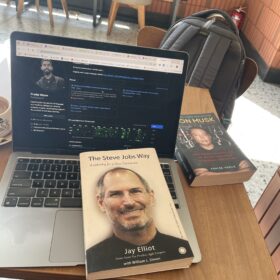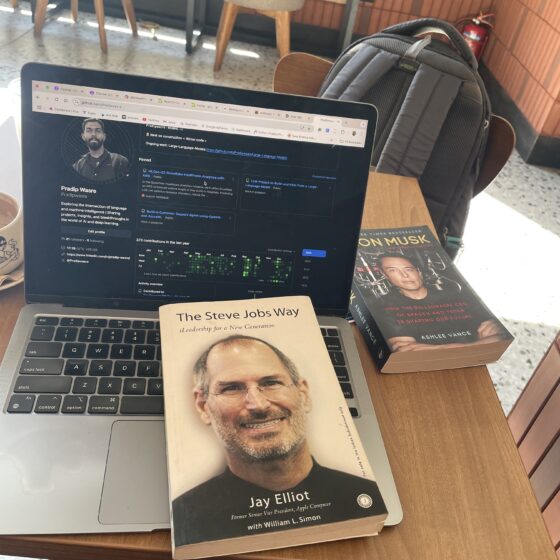Week 5, Day 2: Unveiling LangChain – Simplifying RAG for LLM Applications
Today, let’s dive into LangChain, an open-source framework designed to simplify the creation of applications that use large language models (LLMs). Whether you’re building AI assistants, implementing Retrieval-Augmented Generation (RAG), or summarizing complex documents, LangChain offers tools that make it faster and easier.
1.1: Introducing LangChain
What Is LangChain?
LangChain, launched in October 2022, is an open-source framework that provides a standardized way to interface with various LLMs. It has its own declarative language called LangChain Expression Language (LCEL), making it versatile and adaptable. LangChain is especially useful for projects involving:
- Retrieval-Augmented Generation (RAG).
- Summarization.
- Building conversational AI assistants.
Why Use LangChain?
Pros:
- Faster Development: LangChain simplifies the process of creating applications using LLMs, reducing development time significantly.
- Model Flexibility: Its wrapper code makes it easy to switch between different LLMs (e.g., OpenAI’s GPT models, Cohere, or Anthropic).
- Customizable Workflows: LangChain provides modular components, allowing developers to build tailored pipelines.
Cons:
- Reduced Need Over Time: As APIs for LLMs become more mature and standardized, the demand for a unifying framework like LangChain might decrease.
- Abstraction Trade-off: While LangChain simplifies workflows, it can sometimes abstract away critical details, making debugging or optimization more challenging.
How LangChain Fits into RAG
When implementing RAG, one crucial step is loading and preparing the knowledge base. This is where LangChain shines. Today, we used LangChain to:
- Load Documents: Read all the files and folders in the knowledge base.
- Add Metadata: Attach additional information (like document type) to each file for better organization and retrieval.
- Break Down Content: Split long documents into manageable, overlapping chunks that are ideal for LLM processing.
1.2: LangChain’s Text Splitting for RAG Optimization
Why Do We Split Text?
LLMs have limits on the amount of text they can process in one go. For example, models like GPT-4 have a token limit that you must consider. To make sure the model doesn’t miss any important context:
- We split documents into smaller chunks.
- These chunks often overlap to ensure no information is lost.
This strategy not only avoids hitting token limits but also improves retrieval accuracy by providing more granular data to the LLM.
The Process We Followed
1. Loading the Knowledge Base
- We used LangChain’s DirectoryLoader to read documents from folders.
- Each document was tagged with metadata (like its type or origin). Metadata makes it easier to filter and search later.
Real-world Tip: Adding metadata is essential when dealing with diverse knowledge bases. For instance, if you’re building an AI assistant for a tech company, you can tag documents as “technical guides,” “marketing materials,” or “FAQs.” This tagging allows the system to tailor responses based on context.
2. Breaking Down Documents
Once the documents were loaded, we used LangChain’s TextSplitter to divide them into chunks. Here’s how it works:
- Chunk Size: The maximum size of each text segment (in characters or tokens). For RAG, we used 1,000 characters.
- Chunk Overlap: The overlap between consecutive chunks ensures continuity. We set an overlap of 200 characters.
Why Overlapping Chunks? Imagine splitting a document where one key sentence is cut off mid-chunk. Overlapping chunks prevent this by ensuring the next chunk includes the tail end of the previous one. This helps maintain the flow of information.
3. Inspecting the Data
After splitting the text, we checked:
- The number of chunks created.
- The types of documents present in the knowledge base.
- Whether specific keywords or entities (like “CEO”) were present in the chunks.
Real-world Tip: Always validate the output when splitting documents. Look for edge cases where chunks might lose critical context or where metadata might be missing.
Why LangChain Matters
Here’s why LangChain’s approach is impactful in real-world applications:
1. Simplifies Complex Workflows
Without LangChain, we’d need to manually handle tasks like document parsing, metadata tagging, and chunking. LangChain automates these steps, allowing developers to focus on higher-level tasks like fine-tuning the system or improving retrieval quality.
2. Scales with Large Knowledge Bases
LangChain is designed to work with large datasets, which is essential when building enterprise-level AI applications. For example:
- A legal firm could load thousands of case files and tag them with metadata like case type or jurisdiction.
- A healthcare provider could organize medical documents by patient ID or diagnosis type.
3. Optimizes for Retrieval-Augmented Generation
By creating structured, overlapping chunks with metadata, LangChain ensures the retrieval step in RAG is as efficient as possible. This means:
- Better search accuracy.
- Higher relevance when adding context to prompts.
Practical Considerations
- Choosing the Right Chunk Size: Depending on your LLM’s token limit, you might need to experiment with different chunk sizes. Too small, and the model might miss the bigger picture. Too large, and you risk hitting token limits.
- Maintaining Metadata: Metadata is your best friend when working with large datasets. It helps you organize, filter, and retrieve data efficiently.
- Balancing Cost and Performance: If you’re working with budget constraints, consider using smaller LLM models or optimizing your data pipeline to reduce API calls.
Conclusion
LangChain is a game-changer for building LLM applications, especially those leveraging RAG. Its tools for loading, tagging, and chunking data make it easier to manage knowledge bases and ensure that LLMs perform at their best. By understanding the concepts behind LangChain’s operations, you can design smarter, faster, and more scalable AI solutions.
Tomorrow, we’ll explore how to integrate vector embeddings with LangChain to supercharge retrieval workflows. Stay tuned!

